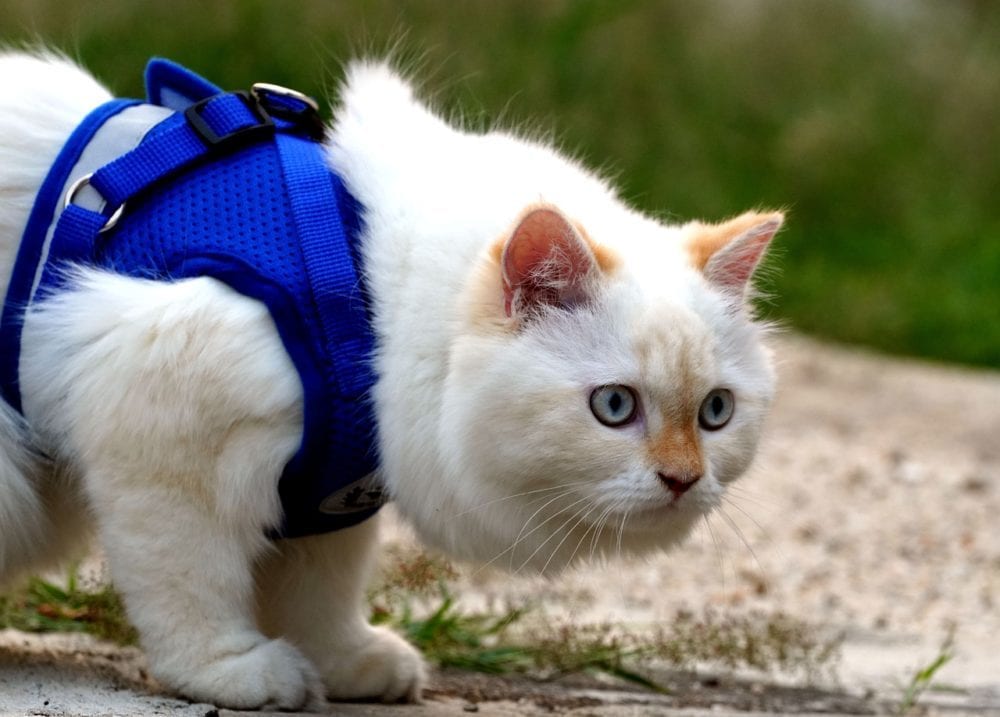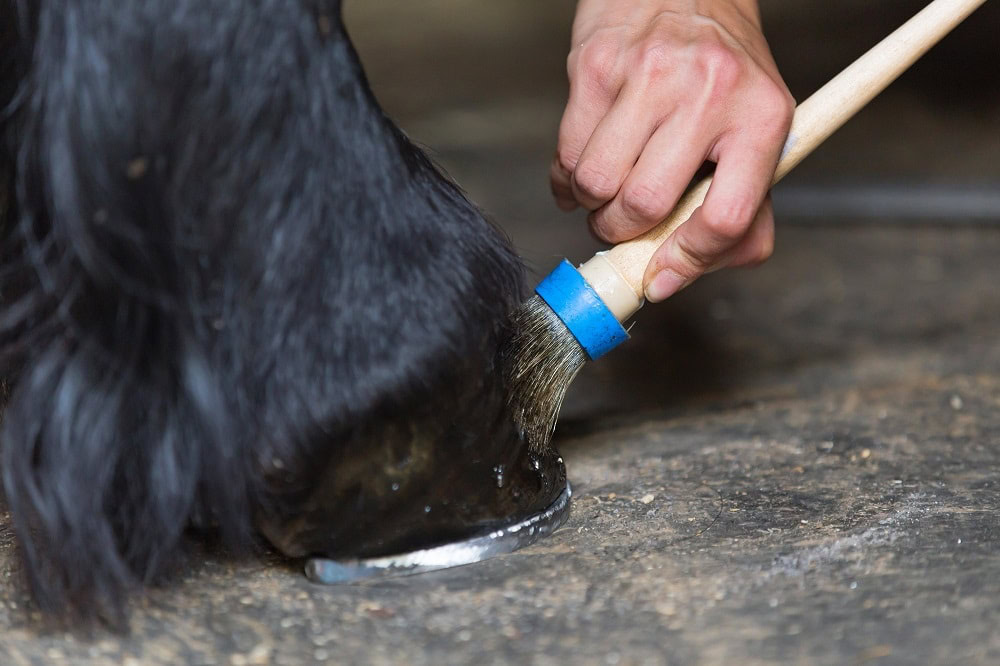VET APPROVED

The information is current and up-to-date in accordance with the latest veterinarian research.
Learn more »Not all indoor cats will prefer the outdoors, but some playful and adventurous cats may enjoy stepping outside and exploring new surroundings. Since most cats are extremely agile, they benefit from wearing a harness that will keep them safe and within reach of their owners.
If you think your cat would enjoy playing outdoors, you can always try training it to wear a harness. It may take several weeks for cats to learn to wear a harness, but the patience and effort are worth it, as harnesses can help your cat exercise and satiate its curiosity. Here are some practical steps you can take to teach your cat to wear and walk with a harness.

Before You Start
Make sure to familiarize yourself with how the cat harness works. The last thing you want is to fumble around with the buckles and make your cat uncomfortable as you figure out how to put it on. So, do some practice on your own before you try it on your cat. It can be helpful to use a stuffed animal to figure out the quickest way to put on the harness.
It’s also important to work with your cat when it is food motivated, but not hungry. About an hour before their regular meal times would be best.
Lastly, make sure you have a good stash of your cat’s favorite treats. Using positive reinforcements and rewards can help your cat become comfortable with harnesses more quickly.
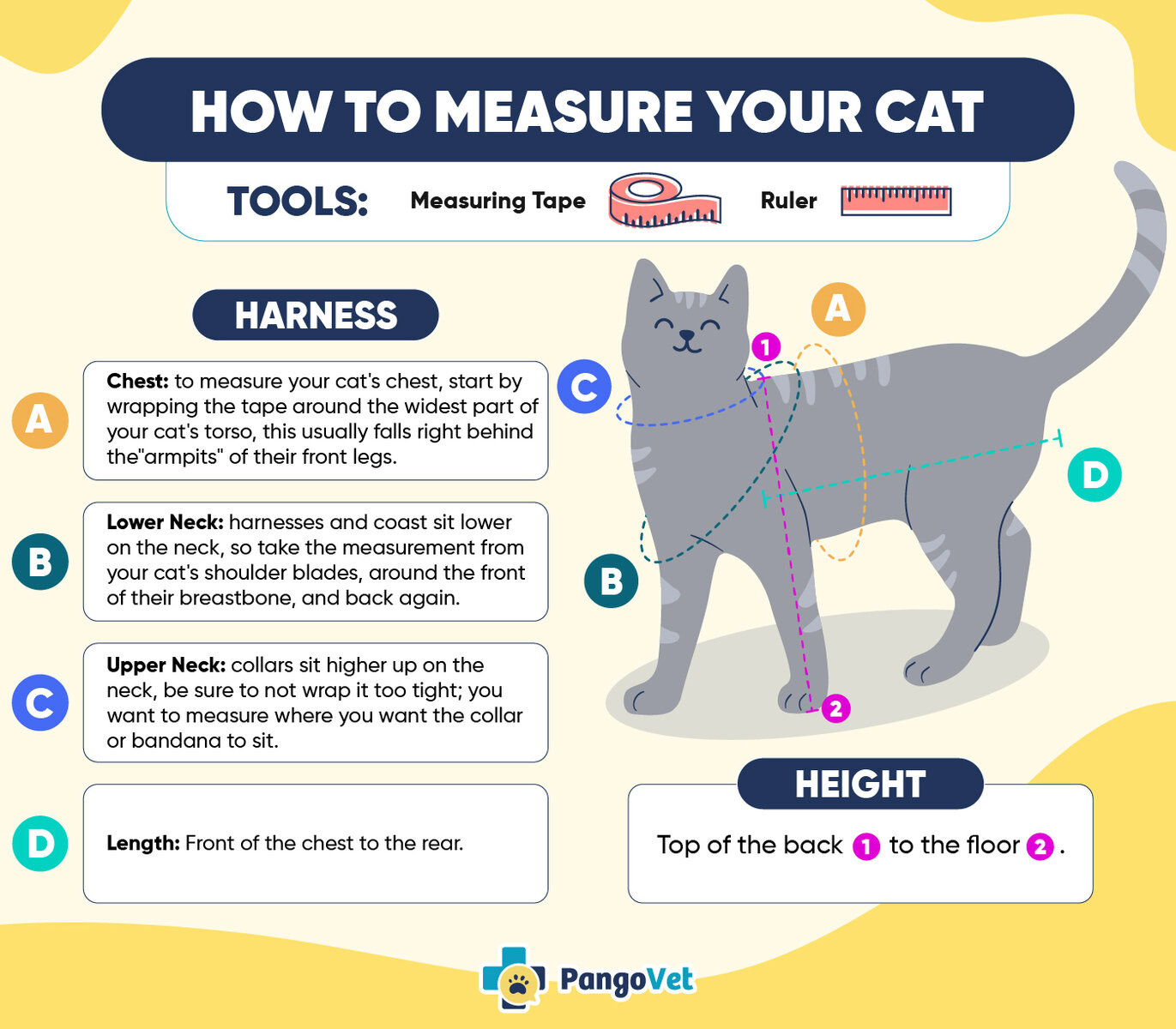
How To Put On A Cat Harness
1. Leave the Harness By Your Cat’s Food Station & Toys
It is important for cats to feel a non-threatening attitude toward a harness. So, introduce it subtly to your cat by leaving it near its food station and ensuring it is nearby when your cat plays with its toys.
A good sign that your cat does not mind the harness is if it can eat next to it. Make sure your cat feels undisturbed by the harness for a few days before moving forward.
2. Start Rewarding Your Cat for Investigating the Harness

Start bringing awareness to the harness by holding it in your hands. If your cat comes to investigate, immediately praise it, and give it some treats. This will start to build a positive association with the harness.
You can also leave the harness on the floor and let your cat approach it. Don’t forget to reward this behavior with treats.
3. Drape the Harness on Your Cat’s Back
Next, gently drape the harness on your cat’s back. You can let the harness slide off naturally. The whole point of this step is to get your cat used to making contact with the harness. Reward your cat every time it allows the harness to touch it while remaining calm.
Keep repeating this step until you are confident that your cat won’t react skittishly when the harness is placed on its back. This can take several days or weeks to accomplish.
4. Put the Harness Around Your Cat’s Neck
Once your cat has a nonchalant attitude towards the harness being on its back, you can move on to putting the front loop around your cat’s neck.
Start by holding the front loop of the harness in front of you. Place a treat close to the opening so that your cat can poke its nose through the loop. Give your cat the treat as soon as its nose passes through the loop. Do this several times until your cat catches on and consistently puts its nose through the loop.
Then, move on to having your cat put its entire head through the loop. Once your cat successfully puts its head through the loop, let go of the harness so that it hangs around your cat’s neck. Leave the harness on for just a few seconds before rewarding your cat. Then immediately take it off.
Start increasing the amount of time your cat wears the harness around its neck until it’s comfortable wearing it for a few minutes at a time. Offer intermediate treats as the time is extended.
Finding a great cat harness can be tricky. Our favorite is Hepper's Cat Harness & Leash Set, which includes a soft, adjustable velvet harness and a premium climbing rope leash.
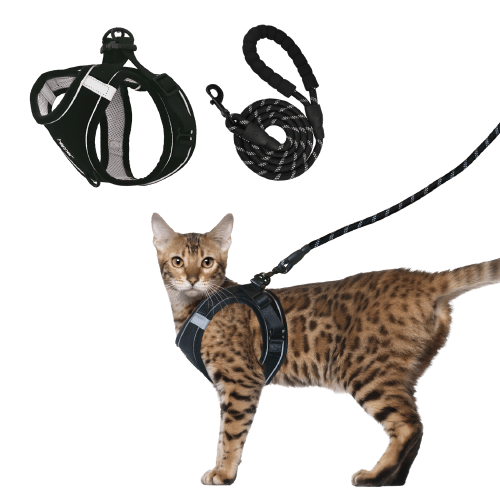
With safety features like quick-release buckles, reflective stripes, and reinforced stitching, you'll love this machine-washable harness as much as your cat will!
At PangoVet, we've admired Hepper for many years, and decided to take a controlling ownership interest so that we could benefit from the outstanding designs of this cool company!
5. Let Your Cat Wear the Harness Indoors
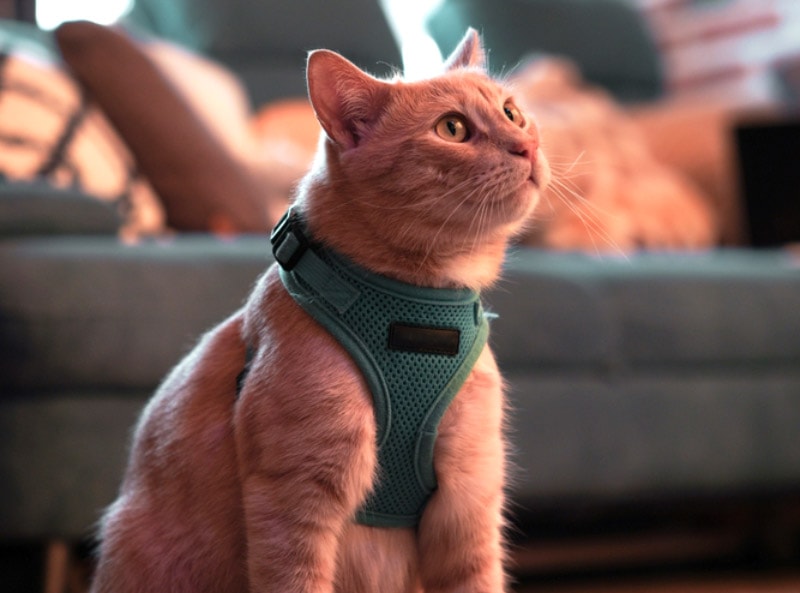
Now, your cat’s ready to put on the harness fully. Clip the harness in place and let your cat wear it for a few seconds before taking it off. Don’t forget to reward your cat.
Keep repeating this until your cat feels comfortable wearing the harness around the house. After some time, you can also attach the leash to the harness so that your cat gets used to it.
6. Transition to Wearing the Harness Outdoors
Once your cat is used to wearing the harness indoors, you can slowly transition to taking your cat outdoors. If you live in an apartment building, start by letting your cat explore your hallway. Make sure that you have a good grip on the leash in case something surprises your cat and it tries to run away.
If you live in a single-family home, start by exploring a place that’s familiar to your cat. If your cat enjoys window watching, you can take your cat to the area outside where your cat often observes from indoors.
Make sure to stay calm so that you’re not sending any anxious signals to your cat. Keep some treats on hand and give them to your cat periodically.
It can be difficult to keep cats focused and walk on a leash as dogs do. However, you can try encouraging it to follow you by using treats.

Conclusion
Many cats can learn to wear a harness and walk on a leash. So, if your cat gets bored easily and likes to investigate new things, it can be a worthwhile endeavor to train it to wear a leash. Just remember to be patient with the process and walk away any time you start to feel frustrated.
It often takes a long time for cats to be comfortable with harnesses. However, once they learn, there will be so many more ways for you and your cat to enjoy the outdoors and spend time together.
Read Also:
- 10 DIY Cat Harnesses You Can Make Today (With Pictures)
- 10 Fun Things to Do with Your Cat: Ultimate Cat Bucket List
Featured Image Credit: ignartonosbg, Pixabay
Contents
- Before You Start
- How To Put On A Cat Harness
- 1. Leave the Harness By Your Cat’s Food Station & Toys
- 2. Start Rewarding Your Cat for Investigating the Harness
- 3. Drape the Harness on Your Cat’s Back
- 4. Put the Harness Around Your Cat’s Neck
- 5. Let Your Cat Wear the Harness Indoors
- 6. Transition to Wearing the Harness Outdoors
- Conclusion
